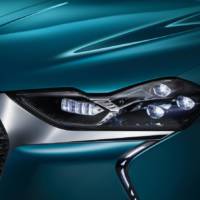Even if the production is sold out, McLaren is finishing the testing period for its fabulous Speedtail just now. The dynamic development programme has concluded with McLaren chief test driver, Kenny Brack, taking the new Speedtail up to its maximum speed of 403 km/h (250mph) at the Kennedy Space Center in Florida, USA.
The final high-speed tests in the ground-breaking hypercar’s extensive engineering validation process saw Speedtail prototype ‘XP2’ reach its maximum speed more than 30 times on the space shuttle landing runway at the Johnny Bohmer Proving Grounds. The exercise concluded a programme of high-speed running carried out at multiple test facilities worldwide, including Idiada in Spain and Papenburg in Germany.
Build of the first of 106 Speedtails that will be hand-assembled to customer order has now commenced at the McLaren Production Centre in Woking, UK, with deliveries scheduled from February 2020.
At almost 5.2 metres long, the carbon-fibre-bodied three-seat Hyper GT is the most aerodynamically drag efficient McLaren ever and a showcase for the brand’s expertise in lightweight engineering.
The Speedtail’s petrol-electric hybrid powertrain delivers the greatest power and torque of any McLaren road car, with a combined 1,070PS (1,055bhp) and 1,150Nm (848lb ft). The straight-line acceleration and maximum speed of the car set new benchmarks for McLaren, with 0-300km/h (0-186mph) achieved in less than 13 seconds and the Speedtail able to reach 403km/h (250mph).
The McLaren-developed battery pack has a power density of 5.2kW/kg, which is the best power-to-weight ratio of any automotive high voltage battery system. The batteries constantly self-charge when the Speedtail is driven – there is no ‘plug-in’ element – however, a wireless charging pad that trickle-charges and maintains the battery’s status when the vehicle is not in use is also included as standard.



